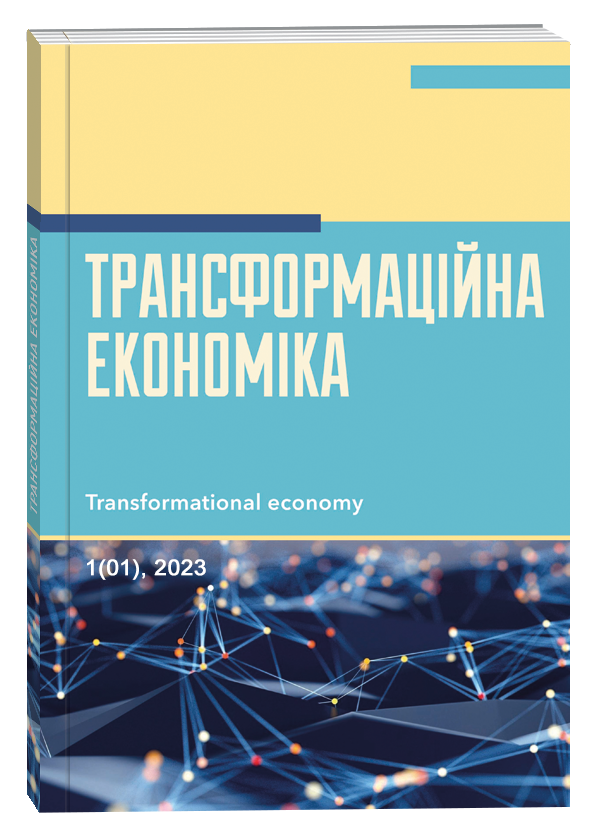INNOVATION PRODUCTION PRICE FORMATION: PROBLEMS AND SOLUTIONS
Abstract
The analysis of domestic and foreign literary sources made it possible to determine that aspects of pricing are often studied exclusively from the single-nomenclatural production. There are no clear recommendations on this issue given in the literature. However, mistakes in price formation can lead to irreparable losses. Studies conducted by Western scientists have shown that practically most companies use the method of setting prices based on full costs. In Ukraine, the situation is almost the same, but it is further deepened due to the method of distributing fixed costs in proportion to wages, which significantly distorts the cost price by types of products. Pricing methods for new production and technical products have their own distinctive features. Clear quantitative calculations are necessary, taking into account the interests of both product manufacturers and consumers. In recent years in foreign economic literature we can observe critical debates of the basic meaning of price, is it “cost” or "value". Thus the debates between the representatives of classical political economy and marginalists moved from the field of pure theory into practical one. In practice, "cost" pricing is prevalent even in most large Western companies, not to mention domestic enterprises. The strategy of "value pricing" is that part of the "value" received by the consumer should remain with the producer. The value of new products for the consumer lies in the fact that, buying a new product, it is used to reduce operating costs (direct wages, materials, technological energy), to increase the quality of his products, and naturally consumer agrees to pay a higher price. But here there are possible problems – before dividing the "value", it must first be defined and distributed in such a way that the interests of both parties are taken into account. The limits of prices as we believe should be calculated – the price below which the product should not be sold and the price above which it is unprofitable for the consumer to buy the product. At the same time, supporters of active pricing do not consider how to define these limits in their works, and without their quantitative measurement, it is impossible to divide the "value" of the product between the consumer and the producer. We fully support the position that the full cost of production should not be used in price formation, i.e. fixed costs should not be included in price formation. But this does not mean that they should not be included in the price. When solving this problem – price formation without taking into account fixed costs, we started from the premise that it is necessary to find such a tool that, interacting with variable (direct) costs, would allow us to form a price with a given profitability. In order to obtain answers to unclear questions that arise in economic theory and practice based on the analysis of concrete reality, we conducted empirical research on the examples of machine-building enterprises and on conditional examples close to real practice. The article suggests recommendations for cost-effective pricing based on marginal approach.
References
C. Menger Principles of Economics (Ludwig von Mises Institute, 2019).
Eugen von Böhm-Bawerk's Value, Cost, and Marginal Utility: Notes on the Translation URL: https://mises.org/library/eugen-von-bohm-bawerks-value-cost-and-marginal-utility-notes-translation (дата звернення: 21.12.2022).
Edwin J. Dolan, David E. Lindsay. Market. Microeconomic model (1992).
Орлов О. Всегда ли цель оправдывает средства? Как распределить условно-постоянные издержки. Економіст. 2001. № 5. С. 45–49.
W.J. Baumol, A.S. Blinder, ed. Economics: Principles and Policy, 11th edn. Mason, Ohio, 2009.
H.A. Simon, Rational Decision Making in Business. The american economic review URL: https://www.academia.edu/7437639/Rational_Decision_Making_in_Business_Organizations (дата звернення: 26.12.2022).
Ronald H. Coase. The Institutional Structure of Production. URL: https://www.jstor.org/stable/2117340 (дата звернення: 26.12.2022).
The Strategy and Tactics of Pricing. A Guide to Growing More Profitably by Thomas T. Nagle, Georg Müller. 6th Edition. - Pub. Location : New York (2017). – 365 p. URL: https://www.taylorfrancis.com/books/mono/10.4324/9781315185309/strategy-tactics-pricing-thomas-nagle-georg-m%C3%BCller (дата звернення: 26.12.2022).
R.J. Dolan. Evernote : Announcing a Pricing Plan Change (Harvard, Harvard Business School Supplement 519-036, 2019).
The Theory of Economic Development by Joseph A. Schumpeter (Routledge, 2021).
Menger, C. (2019). Principles of Economics. Ludwig von Mises Institute.
Eugen von Böhm-Bawerks Value, Cost, and Marginal Utility: Notes on the Translation. Available at: https://mises.org/library/eugen-von-bohm-bawerks-value-cost-and-marginal-utility-notes-translation (accessed 21 December 2022).
Edwin J. Dolan and David E. Lindsay (1992). Market. Microeconomic model.
Orlov O. (2001). Vsehda ly tsel opravdыvaet sredstva? Kak raspredelyt uslovno-postoiannye yzderzhky. Ekonomist. Vol. 5. Рр. 45-49.
Baumol, W.J., Blinder, A.S. ed. (2009). Economics: Principles and Policy, 11th edn. Mason, Ohio.
Simon, H.A. Rational Decision Making in Business. The american economic review. Available at: https://www.academia.edu/7437639/Rational_Decision_Making_in_Business_Organizations (accessed 26 December 2022).
Ronald H. Coase. The Institutional Structure of Production : Available at: https://www.jstor.org/stable/2117340 (accessed 26 December 2022).
The Strategy and Tactics of Pricing (2017). A Guide to Growing More Profitably by Thomas T. Nagle, Georg Müller. 6th Edition. - Pub. Location : New York – 365 p. Available at: https://www.taylorfrancis.com/books/mono/10.4324/9781315185309/strategy-tactics-pricing-thomas-nagle-georg-m%C3%BCller (accessed 26 December 2022).
Dolan, R.J. (2019) Evernote : Announcing a Pricing Plan Change (Harvard, Harvard Business School Supplement 519-036.
Joseph A. Schumpeter (2021). The Theory of Economic Development. Routledge.


